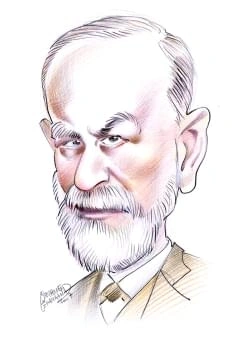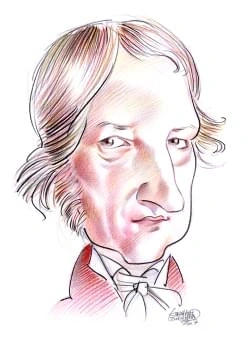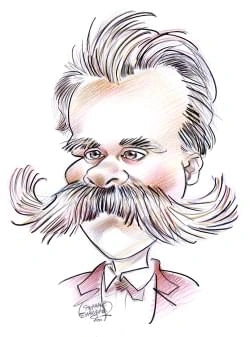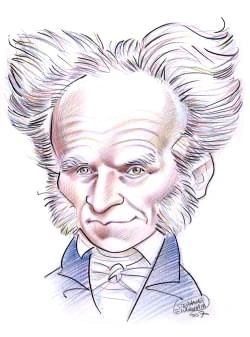211 résultats pour "agricultural"
-
Connecticut - geography.
The state’s shoreline, when all the bays and inlets are taken into account, has a total length of 995 km (618 mi). The coastline is deeply indented by long estuaries androcky inlets, and there are many sandy beaches and stretches of tidal marsh. There are several good harbors along the coast, the most important of which is at NewHaven. A few small islands lie offshore in Long Island Sound. D Climate Connecticut has long, hot summers and cold winters. The climate does not vary greatly from place...
-
Connecticut - USA History.
The state’s shoreline, when all the bays and inlets are taken into account, has a total length of 995 km (618 mi). The coastline is deeply indented by long estuaries androcky inlets, and there are many sandy beaches and stretches of tidal marsh. There are several good harbors along the coast, the most important of which is at NewHaven. A few small islands lie offshore in Long Island Sound. D Climate Connecticut has long, hot summers and cold winters. The climate does not vary greatly from place...
-
South Carolina - geography.
(20° F) or lower, occur each winter. July temperatures average 27° C (80° F) in most of the state, with temperatures in the lower 20°s C (lower 70°s F) in themountains. Except in the mountains, summer daytime highs throughout South Carolina often enter the lower 30°s C (lower 90°s F). The temperature in July in Columbiaranges from 21° to 33° C (70° to 92° F). D2 Precipitation Central South Carolina has an average annual precipitation (both rainfall and snowfall) of 1,140 mm (45 in). Greater amo...
-
South Carolina - USA History.
(20° F) or lower, occur each winter. July temperatures average 27° C (80° F) in most of the state, with temperatures in the lower 20°s C (lower 70°s F) in themountains. Except in the mountains, summer daytime highs throughout South Carolina often enter the lower 30°s C (lower 90°s F). The temperature in July in Columbiaranges from 21° to 33° C (70° to 92° F). D2 Precipitation Central South Carolina has an average annual precipitation (both rainfall and snowfall) of 1,140 mm (45 in). Greater amo...
-
Lithuania - country.
pollution. III PEOPLE Ethnic Lithuanians constitute about 80 percent of the country’s population. The proportion of Lithuanians increased slightly in the first years after the dissolution of theSoviet Union—many Lithuanians returned to their homeland from that country and abroad while some Russians, Ukrainians, and Belarusians left the country. Russiansand Poles constitute the country’s largest minority groups, each accounting for roughly 7 percent of the population. Jews were the largest mino...
-
Cambodia - country.
The population of Cambodia is 14,241,640 (2008 estimate). Population growth per year is estimated at 1.8 percent, one of the highest rates in Asia. The rate of infantmortality is also high. The population density is 81 persons per sq km (209 per sq mi), with the densest concentrations on the heavily cultivated central plain. Themountainous regions of the country, where malaria is widespread, are thinly populated, as are the poorly watered northern provinces. During the late 1970s, under thebruta...
-
Delaware - geography.
D Climate Delaware has generally hot and humid summers and mild winters. D1 Temperature In July, average daytime temperatures are usually in the upper 20°s to lower 30°sC (80°sF) or even higher. But because summer nights tend to be cooler than thedays, July averages are about 24°C (about 75°F). In addition, onshore sea breezes can reduce daytime temperatures along the coast by 3 to 6 Celsius degrees (5 to 10Fahrenheit degrees). January averages range from -1°C (31°F) at Newark, in the north, t...
-
Delaware - USA History.
D Climate Delaware has generally hot and humid summers and mild winters. D1 Temperature In July, average daytime temperatures are usually in the upper 20°s to lower 30°sC (80°sF) or even higher. But because summer nights tend to be cooler than thedays, July averages are about 24°C (about 75°F). In addition, onshore sea breezes can reduce daytime temperatures along the coast by 3 to 6 Celsius degrees (5 to 10Fahrenheit degrees). January averages range from -1°C (31°F) at Newark, in the north, t...
-
-
Colorado - geography.
Although the rivers of Colorado are navigable only by small boats, they are important as a source of irrigation water for use in Colorado and adjoining states. However,the water level of the rivers fluctuates seasonally and from year to year. The level is generally low in winter and high in spring and summer, during the runoff of meltedsnow from the mountains. Colorado has no large lakes of natural origin, but there are numerous small lakes in the mountains. The largest bodies of water in Colora...
-
Colorado - USA History.
Although the rivers of Colorado are navigable only by small boats, they are important as a source of irrigation water for use in Colorado and adjoining states. However,the water level of the rivers fluctuates seasonally and from year to year. The level is generally low in winter and high in spring and summer, during the runoff of meltedsnow from the mountains. Colorado has no large lakes of natural origin, but there are numerous small lakes in the mountains. The largest bodies of water in Colora...
-
Industrial Revolution
I
INTRODUCTION
Industrial Revolution, widespread replacement of manual labor by machines that began in Britain in the 18th century and is still continuing in some parts of the world.
The most important advance in iron production occurred in 1784 when Englishman Henry Cort invented new techniques for rolling raw iron, a finishing process thatshapes iron into the desired size and form. These advances in metalworking were an important part of industrialization. They enabled iron, which was relativelyinexpensive and abundant, to be used in many new ways, such as building heavy machinery. Iron was well suited for heavy machinery because of its strength anddurability. Because of t...
-
Industrial Revolution .
The most important advance in iron production occurred in 1784 when Englishman Henry Cort invented new techniques for rolling raw iron, a finishing process thatshapes iron into the desired size and form. These advances in metalworking were an important part of industrialization. They enabled iron, which was relativelyinexpensive and abundant, to be used in many new ways, such as building heavy machinery. Iron was well suited for heavy machinery because of its strength anddurability. Because of t...
-
Bulgaria - country.
E Climate Most of Bulgaria has a continental climate, with cold winters and hot summers. The climate in general is more severe than in other European areas of the samelatitudes, and the average annual temperature range is greater than that of neighboring countries. Severe droughts, frosts, winds, and hail storms frequently damagecrops. A Mediterranean climate, with dry summers and mild, humid winters, prevails in the valley of the southwestern Rhodope Mountains; the northern limit of theclimati...
-
New Brunswick - Geography.
Grand Lake, the largest lake in New Brunswick, is in the lowlands, east of Fredericton. Most other lakes are located in the northern and southwestern parts of NewBrunswick. D Climate New Brunswick has a continental climate that is moderated by maritime influences in the coastal areas. As a result, coastal regions are slightly warmer in the winter andslightly cooler in the summer than are interior regions. Annual temperature variations are large, with the January mean usually at least 25 to 28°C...
-
New Brunswick - Canadian History.
Grand Lake, the largest lake in New Brunswick, is in the lowlands, east of Fredericton. Most other lakes are located in the northern and southwestern parts of NewBrunswick. D Climate New Brunswick has a continental climate that is moderated by maritime influences in the coastal areas. As a result, coastal regions are slightly warmer in the winter andslightly cooler in the summer than are interior regions. Annual temperature variations are large, with the January mean usually at least 25 to 28°C...
-
South Korea - country.
forest habitat, and overhunting. The Siberian tiger has not been sighted in the wild in South Korea since the 1920s; the Asiatic black bear can still be found in someremote mountain areas. Several species of deer are indigenous to the peninsula, including the roe deer, water deer, and Siberian musk deer. The musk deer, which hasbeen overhunted for its musk glands, is legally protected as a threatened species. Smaller mammals indigenous to the peninsula include the wild boar, red fox, badger,rabb...
-
-
Hawaii (state) - geography.
limestone along the coast. The volcanoes of the Hawaiian Islands are all so-called shield volcanoes, or lava domes. Unlike the volcanoes of Alaska and South America, those of Hawaii were notcreated by very explosive eruptions. Formed mostly by lava flows, they are great rounded mountain masses, rather than steep-sided cones. Mauna Kea, dormant forcenturies, is the highest mountain in the state. It rises to 4,205 m (13,796 ft) above sea level, and its summit is dotted with cinder cones formed by...
-
Hawaii (state) - USA History.
limestone along the coast. The volcanoes of the Hawaiian Islands are all so-called shield volcanoes, or lava domes. Unlike the volcanoes of Alaska and South America, those of Hawaii were notcreated by very explosive eruptions. Formed mostly by lava flows, they are great rounded mountain masses, rather than steep-sided cones. Mauna Kea, dormant forcenturies, is the highest mountain in the state. It rises to 4,205 m (13,796 ft) above sea level, and its summit is dotted with cinder cones formed by...
-
Roman Mythology
I
INTRODUCTION
Roman Mythology, the religious beliefs and practices of the people of ancient Rome.
Aeneas and AnchisesAccording to mythology, Aeneas was a Trojan prince. After Troy fell to the Greeks during the Trojan War, Aeneas traveledto Italy and met and married a woman in the kingdom that occupied the region that would one day become Rome.Through this marriage, Aeneas was the direct ancestor of Romulus and Remus, the legendary founders of Rome. In thispainting he is carrying his father, Anchises, on his back while fleeing from Troy. This painting by Lionello Spada is in theLouvre Museum...
-
Fungus - biology.
Many fungi can reproduce by the fragmentation of their hyphae. Each fragment develops into a new individual. Yeast, a small, single-celled fungus, reproduces bybudding, in which a bump forms on the yeast cell, eventually partitioning from the cell and growing into a new yeast cell. V CLASSIFICATION OF FUNGI Scientists have long disagreed about how to classify fungi, and the classification systems are still developing. The first description of fungi was published in 1729 byItalian botanist Pier...
-
Trinidad and Tobago - country.
III PEOPLE The history of Trinidad and Tobago is reflected in the makeup of its population, among the most ethnically diverse in the Caribbean. Blacks of African ancestry andAsians of Indian ancestry each make up about 40 percent of the population. The remainder is mainly of mixed ancestry, although there are also small groups of peopleof Chinese, European, South American, and Middle Eastern descent. The ethnic diversity of Trinidad and Tobago owes its origins to slavery and its abolition. Afr...
-
Ottoman Empire .
fleets at Suez, Egypt; though the Portuguese were not expelled, Selim did manage to prevent the establishment of a total Portuguese monopoly over the spice trade. Selim I died in 1520 after having spent most of his short reign on matters pertaining to the east. His son and successor Süleyman I (reigned 1520-1566) again turnedthe attention of the Ottomans to the west. In August 1521 Süleyman, later known as Süleyman the Magnificent, opened the road to Hungary by capturing Belgrade, aHungarian str...
-
Ottoman Empire - History.
fleets at Suez, Egypt; though the Portuguese were not expelled, Selim did manage to prevent the establishment of a total Portuguese monopoly over the spice trade. Selim I died in 1520 after having spent most of his short reign on matters pertaining to the east. His son and successor Süleyman I (reigned 1520-1566) again turnedthe attention of the Ottomans to the west. In August 1521 Süleyman, later known as Süleyman the Magnificent, opened the road to Hungary by capturing Belgrade, aHungarian str...
-
Sri Lanka - country.
acacias, and orchids are found in many areas. The animal life of Sri Lanka includes 88 species of mammals, 21 of which are threatened with extinction. The Asian elephant, cheetah, leopard, and several species ofmonkey are endangered and officially protected. The island’s many species of primates include the long-tailed langur, toque macaque, and slender loris. Other mammalsinclude the sloth bear, several species of deer, mongoose, and wild boar. Reptiles are numerous, with 144 known species. Som...
-
-
Renaissance
I
INTRODUCTION
Renaissance, series of literary and cultural movements in the 14th, 15th, and 16th centuries.
the great writings of ancient Greece and Rome. Intellectuals continued to build on the ideas of the Renaissance during the 18th century Age of Enlightenment, a time when scientific advancements led to a newemphasis on the power of human reason. One of the early Enlightenment thinkers was French philosopher and writer Voltaire. He claimed that the Renaissance was acrucial stage in liberating the mind from the superstition and error that he believed characterized Christian society during the Middl...
-
Renaissance .
the great writings of ancient Greece and Rome. Intellectuals continued to build on the ideas of the Renaissance during the 18th century Age of Enlightenment, a time when scientific advancements led to a newemphasis on the power of human reason. One of the early Enlightenment thinkers was French philosopher and writer Voltaire. He claimed that the Renaissance was acrucial stage in liberating the mind from the superstition and error that he believed characterized Christian society during the Middl...
-
West Virginia - geography.
Forests, mostly of hardwood varieties, cover 79 percent of West Virginia. The principal commercial species are the oak, yellow poplar, maple, birch, beech, black walnut,hickory, and gum. Softwoods include pines and hemlock firs. Flowering trees include the wild crab apple, dogwood, hawthorn, and redbud. Among the many floweringbushes and plants are the rhododendron, which is the state flower, the laurel, blueberry, hepatica, wild geranium, and black-eyed Susan. Insects and disease, mostly introd...
-
West Virginia - USA History.
Forests, mostly of hardwood varieties, cover 79 percent of West Virginia. The principal commercial species are the oak, yellow poplar, maple, birch, beech, black walnut,hickory, and gum. Softwoods include pines and hemlock firs. Flowering trees include the wild crab apple, dogwood, hawthorn, and redbud. Among the many floweringbushes and plants are the rhododendron, which is the state flower, the laurel, blueberry, hepatica, wild geranium, and black-eyed Susan. Insects and disease, mostly introd...
-
Phoenix (city, Arizona) - geography.
alfalfa, durum wheat, vegetables, citrus and other fruits, and beef and dairy cattle. The health service industry is a large and growing part of the city’s economy. United States State Capitals© Microsoft Corporation. All Rights Reserved. Phoenix is served by interstate highways 10 and 17, the Southern Pacific and the Burlington Northern Santa Fe railroads, and Sky Harbor International Airport. In its early years, Phoenix became popular as a haven for winter visitors from North America’s colder...
-
Belize - country.
Education is compulsory for children between the ages of 5 and 14. Attendance at primary schools was nearly universal in 2002–2003, but only 78 percent of children ofsecondary school age were enrolled in school. Higher education is available at colleges in Belize City and Corozal. The literacy rate of 93 percent is one of the highest inLatin America. C Government Belize is governed under a constitution that became effective at independence in 1981. Belize recognizes the British monarch as its o...
-
Zambia - country.
The Livingstone Museum, at Livingstone, has a collection relating to the archaeology and natural history of southern Africa. The Institute for African Studies of theUniversity of Zambia publishes studies relating to central Africa. IV ECONOMY The wealth of Zambia is based largely on mining in the rich copper belt, and downturns in copper prices have severely damaging economic consequences. Someprocessing and manufacturing has been started since independence, and during the 1970s attempts were...
-
Sudan - country.
B Principal Cities and Political Divisions The principal city is Khartoum, the capital; other major cities include Omdurman and Khartoum North, major industrial centers, and Port Sudan, a seaport on the RedSea. Sudan is divided into 26 states. C Religion and Language About 70 percent of the people of Sudan are Muslims, some 15 percent are Christians, and most of the remainder follow traditional religions. The people of northernSudan are predominantly Sunni Muslims (Sunni Islam). Most of the pe...
-
-
Warren G.
In his few campaign speeches, Harding relied mainly on the political effectiveness of bland generalities. Sometimes his statements were deliberately confusing. Forexample, he promised internationally minded voters that he would support an “association of nations,” while at the same time he promised “America first!” toisolationists. In this way he won the support of influential Republicans who believed in the League of Nations as well as those who opposed it. Harding's inoffensive standon the lea...
-
Yangtze - Geography.
A Agriculture and Industry Today about 400 million people, or about one-third of the population of China, live in the Yangtze Basin. Many are engaged in agriculture. The basin contributes nearlyhalf of China’s crop production, although only one-quarter of the basin is arable. The most fertile areas for farming are the Sichuan Basin, the plains between theYangtze and its tributary the Han, and the plains of the lower basin. In all about 40 percent of the cereals, more than 30 percent of the cott...
-
Shang Dynasty - History.
The dynastic ancestors belonged to an elaborate religious pantheon that also included various nature powers and the Shang high god, Di. The higher powers were lessconcerned with the well-being of Shang society than the ancestors were. Di, whose wishes were often hard to determine, could even cause the Shang harm. The naturepowers could occasionally influence the wind, rain, and harvests, but only Di could actually order the weather. For an agricultural society such as the Shang, this wasperhaps...
-
Burundi - country.
D Way of Life Most Burundians live in self-contained compounds of small round grass huts scattered over the country’s many hills. The rugo , the traditional Tutsi hut, is divided into sections and surrounded by an enclosure and cattle corrals. Families farm scattered plots of land on different soils at different altitudes to minimize crop failure. Thefloors of valleys are avoided due to higher temperatures and tsetse fly infestation. Social roles are largely determined by ethnicity, with the T...
-
Native American Religions.
In the worldview of most of the indigenous peoples of North America, there were also spiritual beings to be avoided. Native Americans of the Southwest in particular,such as the Navajo and Apache, dreaded contact with ghosts, who were believed to resent the living. These peoples disposed of the bodies of deceased relativesimmediately and attempted to distance themselves from the spirits of the dead, avoiding their burial sites, never mentioning their names, and even abandoning thedwellings in whi...
-
River.
IV RIVER PATTERNS River patterns, or general shapes, depend on the geologic zone and the climate of the location. There are four river patterns: meandering, braided, anastomosing, andstraight. A meandering pattern follows a winding, turning course. A braided pattern has connected channels that resemble a hair braid. An anastomosing river patterncombines features of the meandering and braided patterns. Some river patterns are simply straight channels. Meandering and braided are the most common...
-
River - Geography.
IV RIVER PATTERNS River patterns, or general shapes, depend on the geologic zone and the climate of the location. There are four river patterns: meandering, braided, anastomosing, andstraight. A meandering pattern follows a winding, turning course. A braided pattern has connected channels that resemble a hair braid. An anastomosing river patterncombines features of the meandering and braided patterns. Some river patterns are simply straight channels. Meandering and braided are the most common...
-
Political Parties in the United States.
quickly enabled the Republican Party to overpower the Know-Nothings. Although the Republicans lost their first campaign for the presidency in 1856, they triumphed in1860 with former congressman Abraham Lincoln. The Republican victory resulted in part from the division of the Democratic Party into Northern and Southern factions,each of which ran its own presidential candidate, and in part from their success at attracting Whigs and Know-Nothings who had opposed the Republicans in 1856.During the C...
-
-
Syria - country.
D Education Primary education is free and compulsory for all children aged 6 through 12. Some 78 percent of the adult Syrian population was estimated to be literate in 2005.Primary schools enrolled 2.8 million pupils in the 2000 school year, and 1.1 million students attended secondary schools and vocational institutes. In 1998, 94,110 Syrian students were enrolled in institutes of higher education. Syria has universities in Damascus, Ḩalab, Ḩim ş, and Al L ādhiq īyah. Also in Damascus isthe Ar...
-
Capitalism.
Physiocracy is the term applied to a school of economic thought that suggested the existence of a natural order in economics, one that does not require direction from the state for people to be prosperous. The leader of the physiocrats, the economist François Quesnay, set forth the basic principles in his Tableau économique (1758), in which he traced the flow of money and goods through the economy. Simply put, this flow was seen to be both circular and self-sustaining. More important, however...
-
Air Pollution.
Several pollutants attack the ozone layer. Chief among them is the class of chemicals known as chlorofluorocarbons (CFCs), formerly used as refrigerants (notably in airconditioners), as agents in several manufacturing processes, and as propellants in spray cans. CFC molecules are virtually indestructible until they reach thestratosphere. Here, intense ultraviolet radiation breaks the CFC molecules apart, releasing the chlorine atoms they contain. These chlorine atoms begin reacting withozone, br...
-
Tunisia - country.
mixture of Berber and Arab stock, and they regard themselves as Arabs. Nearly everyone speaks Arabic. The population of Tunisia is concentrated in the coastal plain. It is fairly dense in the hilly north, but the arid plateau, basin, and south are thinly settled. About two-thirds of the country’s people live in urban areas. A Principal Cities The capital and largest city of Tunisia is the seaport of Tunis. Other important cities include Sfax, a port and center of trade on the eastern coast; Sūs...
-
Great Depression in the United States - U.
prices would continue to rise and they could soon sell their stocks at a profit. The widespread belief that anyone could get rich led many less affluent Americans into the market as well. Investors bought millions of shares of stock “on margin,” arisky practice similar to buying products on credit. They paid only a small part of the price and borrowed the rest, gambling that they could sell the stock at a highenough price to repay the loan and make a profit. For a time this was true: In 1928 the...
-
St. Louis (city) - geography.
I
INTRODUCTION
St. Louis (city) or Saint Louis,
Between 1940 and 1990 the black population in metropolitan St. Louis nearly tripled. Blacks are most heavily concentrated in three areas in the St. Louis metropolitanregion: East Saint Louis, the North Side close to downtown, and an east-west belt extending from the waterfront to beyond Forest Park. In the 19th and early 20th centuries, areas to the north and south of the central business district were settled by immigrant working families from Germany, Ireland,and many Eastern European countrie...
-
Dominican Republic - country.
Manatees and sea turtles also live in Dominican waters. Common birds include blue herons, glossy ibis, flamingos, and brown pelicans. E Environmental Issues Urban dwellers of the Dominican Republic enjoy good access to safe water, but rural communities do not. While current water use is low relative to available resources,water shortages do occur. Although deforestation was once a serious problem in the Dominican Republic, by the beginning of the 21st century, the annual rate of deforestation h...
-
Tajikistan - country.
by more than 100 percent due to a high birth rate and improvements in medical care. During the early 1990s, however, the growth rate began to decline due to civilwar and emigration. A Ethnic Groups and Languages Tajiks constitute the largest ethnic group in Tajikistan, making up about 65 percent of the population. The peoples who live in Gorno-Badakhshan, located in the Pamirs,are classified as Tajiks, although their languages and customs are distinct. The largest minority group in the country...
-
-
Bangladesh - country.
F Environmental Issues Waterborne diseases such as cholera are a serious threat to public health in Bangladesh. Until the 1970s, many of Bangladesh’s people became sick from drinkingpolluted water drawn from surface rivers. Aid agencies such as the United Nations Children’s Fund (UNICEF) built shallow wells throughout the country to help provide asafe source of drinking water to Bangladesh’s poor. In the 1990s, however, it was discovered that many of these wells were contaminated by arsenic, a...
-
Nova Scotia - Geography.
summer. Nova Scotia receives an average of more than 1,140 mm (45 in) of rain annually, with the Atlantic shore receiving 1,400 mm (55 in) or more. Most of the provincereceives about 1,900 mm (about 70 in) of snow, and considerable winter precipitation comes in the form of rain or ice storms. The average temperature in January, thecoldest month, is generally about -4°C (about 25°F) near the coast and somewhat colder toward the interior. The average temperature in July, the hottest month, isabout...
}})








